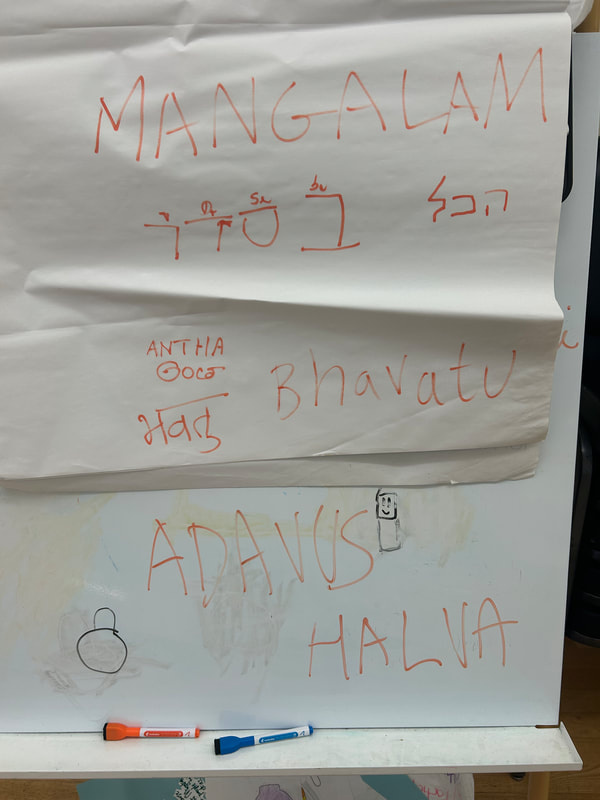The Body Poetic at Arts for the Aging (2)On October 27, 2023, as a teaching artist for Arts for the Aging, certified poetry therapist Lauren Mazow Boyle and I presented a series of workshops entitled "The Body Poetic: Exploration through Indian Dance and Poetry". We explored Tagore's "Over the Green and Yellow Rice Fields"; participants created a group poem; below is a small excerpt of the poetry that participants made:
"The thoughts that you think Before the day starts Telling yourself you’re to enjoy it At this age, or any age Sad or happy, you make a choice."
0 Comments
The Body Poetic at Arts for the Aging (1)In the last few posts, we talked about how Bharatanatyam, given its rootedness in universal themes, can be a great way to facilitate learning of languages and ideas between participants and analyze nuances of language. I am so excited to take these ideas forward as a teaching artist for Arts for the Aging. In a series of workshops entitled "The Body Poetic: Exploration through Indian Dance and Poetry", certified poetry therapist Lauren Mazow Boyle and I will explore poetry and movement. We will find the joy of poetry, expression, movement, music, and storytelling. Participants will explore Bharatanatyam, a 2,000-year-old dance form that originated in South India, as it entwines with the poetic arts. In this interactive, live 4-week workshop series via Zoom, participants will explore works by poets of Indian origin, dive into the language of emotions (called rasas), and create collaborative poetry inspired by movement in the Bharatanatyam style to strengthen community connections. Image to the left: "Tripataka" hasta (hand gesture) showing the act of writing. Short video to the right: The Natya Sastra says of poetry, "there is no word without a rhythm, and no rhythm without a word. So when rhythm and word combine, a metre results." I have combined hastas for "writing" and for "rhythm" to symbolize poetry. Thanks to my many friends for their suggestions of poets of Indian origin - Kylie Madhav, Margie Sastry, Sminu Achary, Marina Thomas, Vaidya Gullapalli, Amritha Kasturirangam, Smriti Rana, and Vibhakar Kotak.
Dance and Words (continued)..In the last post, we saw how Bharatanatayam can provide a systematic way to express abstract themes and facilitate structured dialog and sharing. Bharatanatyam can also be a way to analyze nuances of language. For example, participants wonder if a word like “bhavatu” which means “let there be” could also mean “let me make it so”. Although similar in a general sense, differences between the two phrases can be manifested through dance. In a multicultural place like NYC, we yearn to share our language with others and Bharatanatyam can give participants a chance to share their language which can be an invaluable source of learning for all. Left: the word Mangalam in English and Hakol beseder ("everything is good") in Hebrew. Below that is the word "Antha" in Telegu meaning "all" or "everything"]
Right: The words "king" and "queen" in Hebrew] |
AuthorMy name is Sloka. I am a neuroscientist and dancer; you can find more about me here. Archives
June 2024
|


